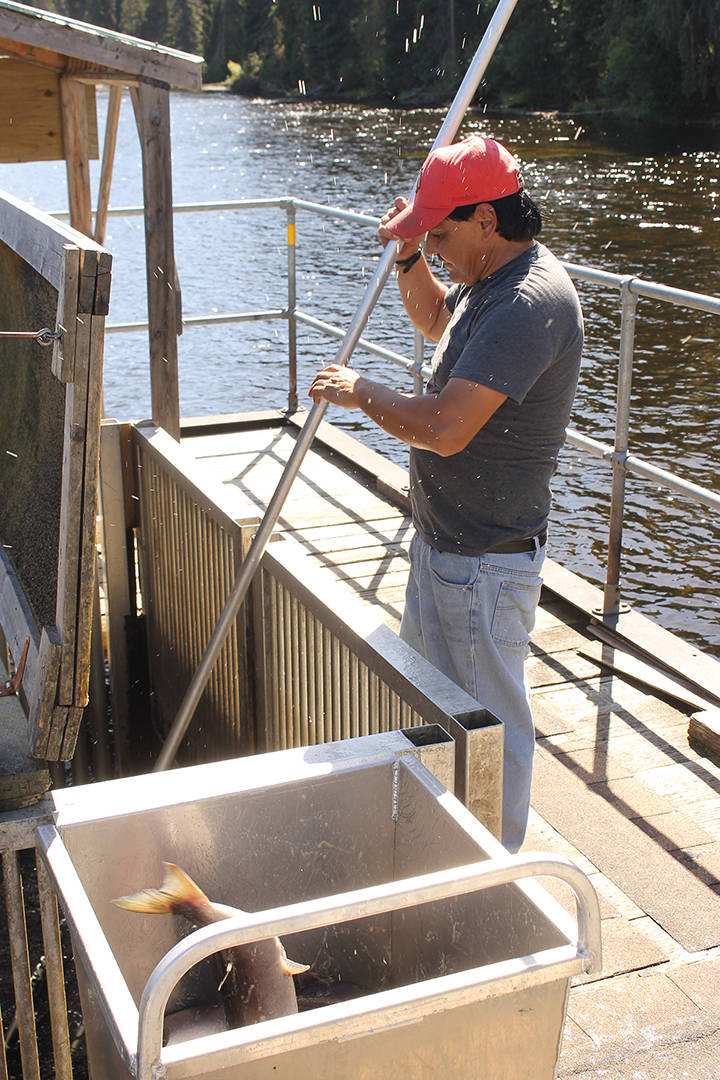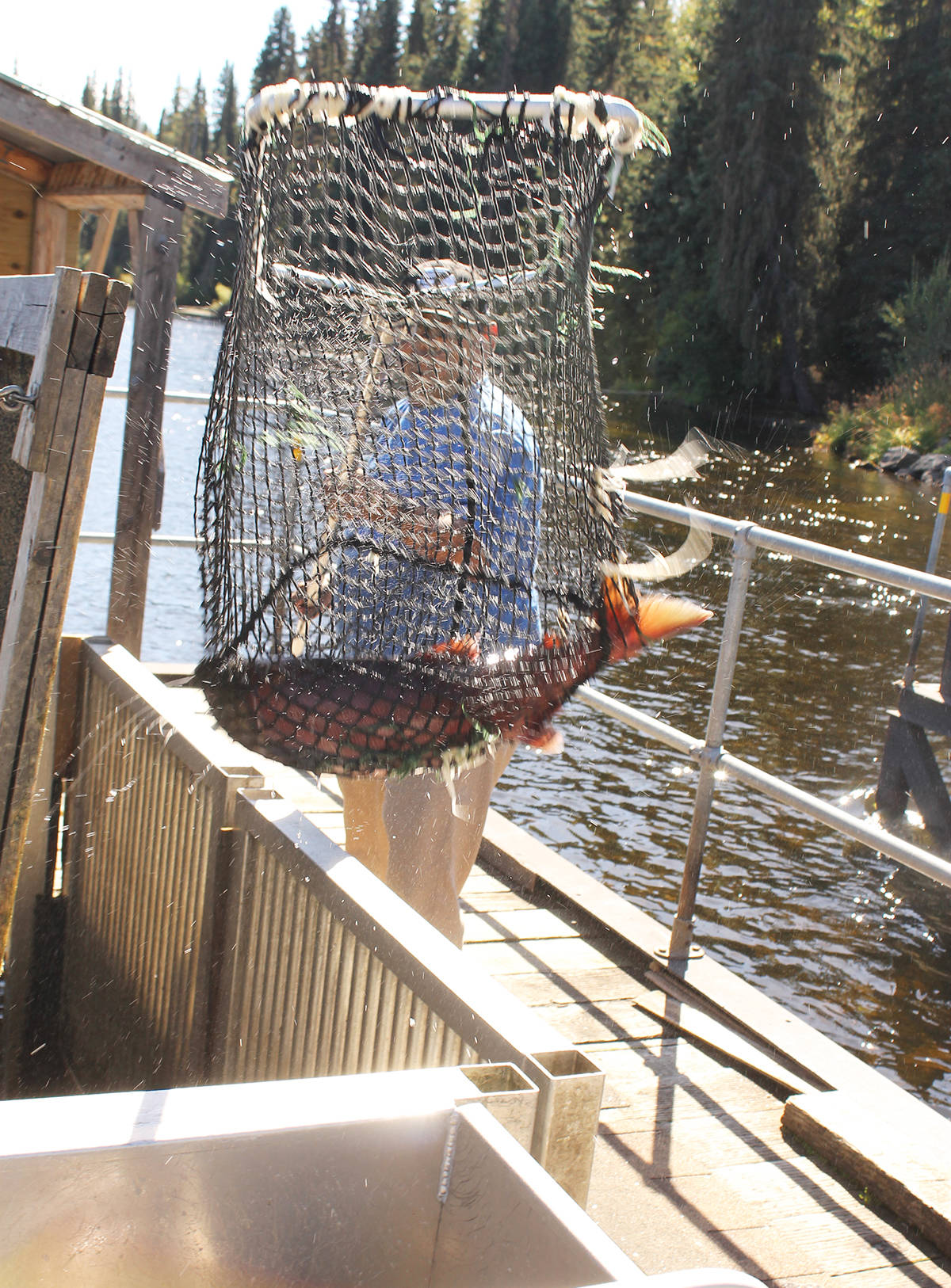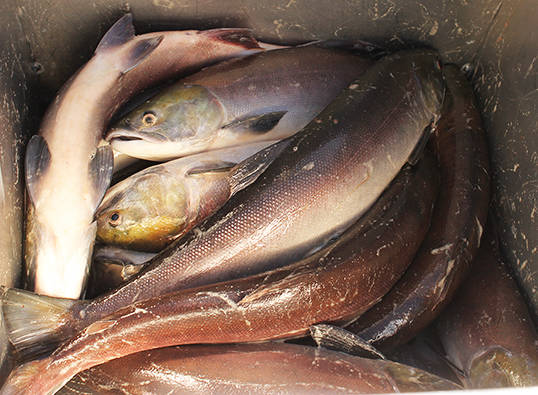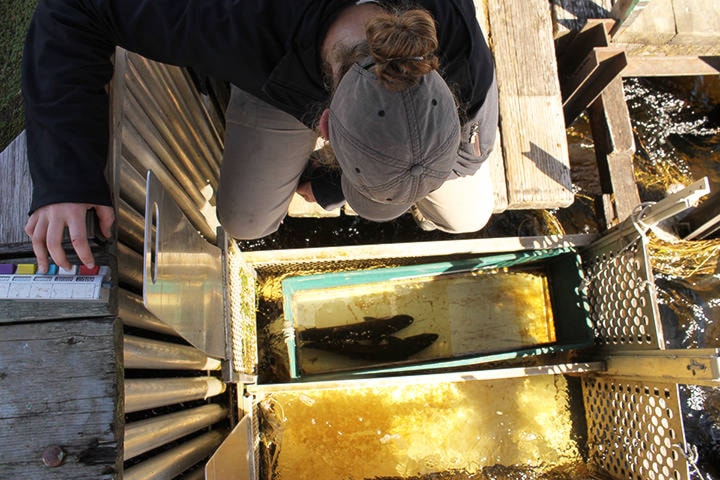Although recreational fishing for Skeena River chinook, coho and pink salmon will reopen on July 15, recreational fishing for sockeye and chum salmon will remain closed in the entire Skeena watershed.
The Department of Fisheries and Oceans Canada (DFO) initiated the closure June 15 due to predicted low salmon returns.
Based on estimated escapement to date, and assuming average run-timing, the total sockeye return estimate last week was 419,000, which is even lower than the pre-season estimate of 590,000 sockeye.
According to Lake Babine Nation (LBN) Chief Wilf Adam, at least 600,000 would be necessary for LBN members to start harvesting sockeye. First Nations food, social and ceremonial harvesting of sockeye salmon will be closed for the entire 2017 season unless there is an indication of increased sockeye abundance, which doesn’t seem very likely at this point.
“We are in discussion with our neighbours to the west for trade for salmon for our membership,” said Chief Adam.
Colin Masson, DFO’s north coast area director, said 2017 - the last year of the sockeye’s four-year cycle - is anticipated to have one of the lowest sockeye returns on record for the Skeena watershed. During the closure, First Nations are permitted to harvest only chinook, pink and chum salmon.
As of July 15, additional management measures will also be implemented for recreational fishing of Skeena chinook, as follows:
- The maximum daily quota for Skeena chinook will be reduced to two chinook salmon, only one of which can be over 65 cm, in the entire Skeena River watershed;
- The Skeena River mainstem, upstream of the Sustut River and at the Kitwanga and Kispiox River mouths, will be closed to chinook fishing;
- All tributaries and lakes of the Skeena River will be closed to chinook fishing, except for sections of the Babine, Bulkley, Kitsumkalum, Morice and Sustut Rivers.
The entire Skeena River watershed will be closed to chinook fishing again on Aug. 15, 2017, to protect spawning chinook stocks.
Skeena-Bulkley Valley MP Nathan Cullen said last month that the Skeena fishery closure was a “slam to the northwest economy,” and that it would likely have been avoided if federal officials had been more aggressive in stock management over the last decade.
The DFO says that overfishing is not a significant contributor to the anticipated low sockeye return.
For a complete list of Skeena recreational salmon regulations, visit the online B.C. Sport Fishing Guide, freshwater region six, at http://bcsportfishguide.ca.






